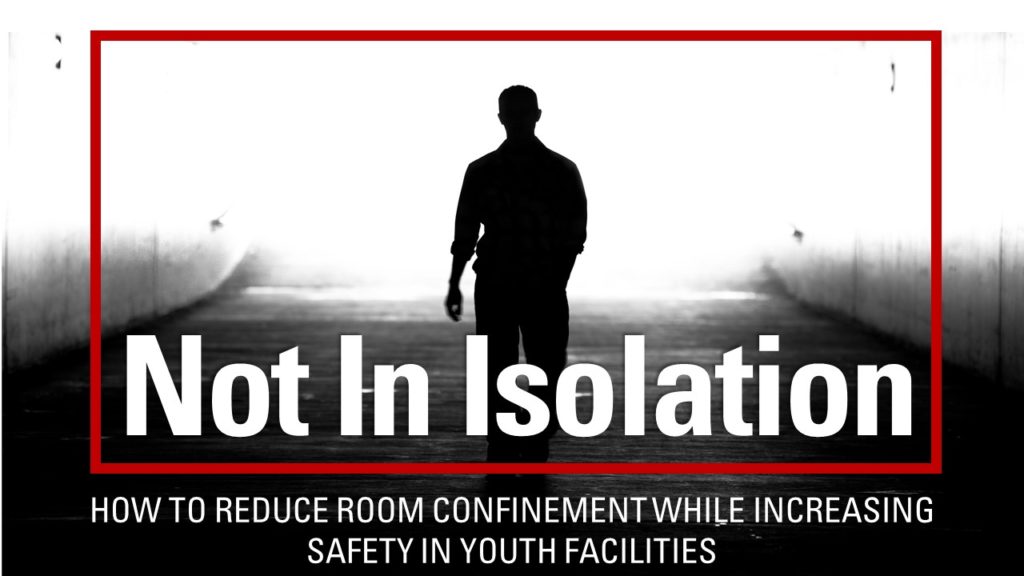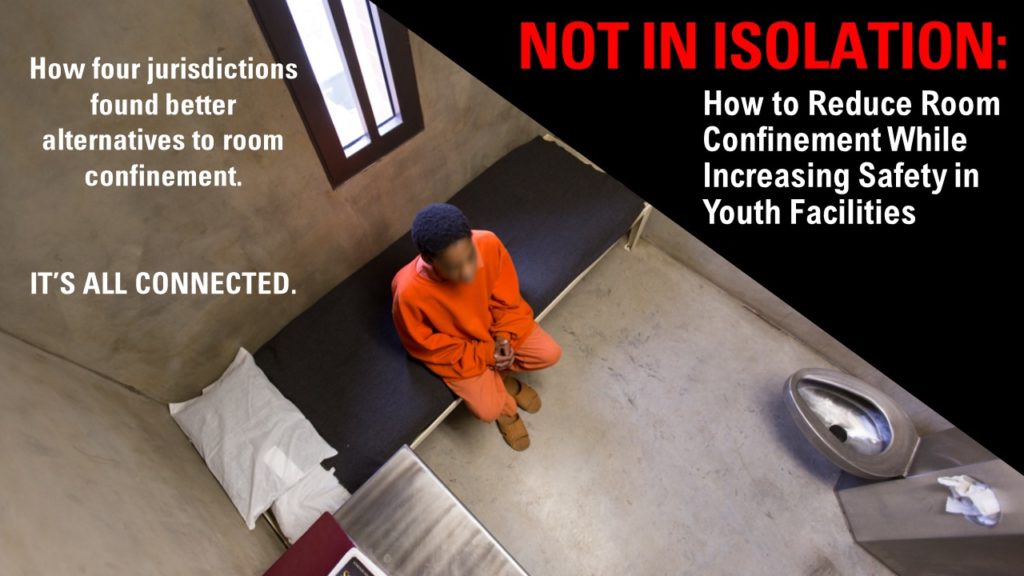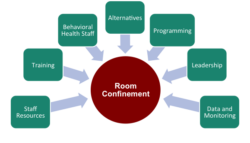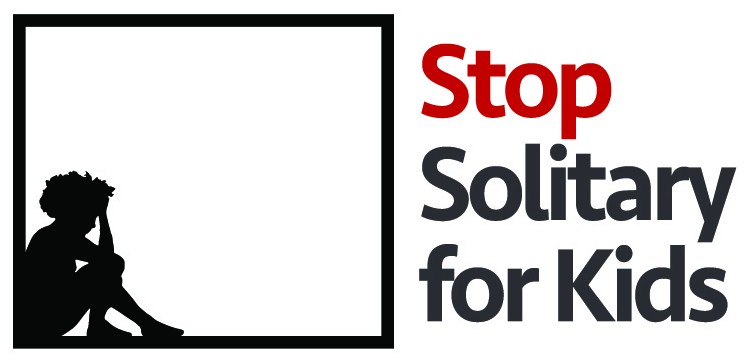NOT IN ISOLATION: How to Reduce Room Confinement While Increasing Safety in Youth Facilities
- FULL REPORT | Executive Summary
 Fact Sheet
Fact Sheet- Fact Sheet for Facilities and Agencies
- Fact Sheet – Featured Jurisdictions
- Social Media [Toolkit | Downloadable Images]
- Press Release
Read coverage on the report in JJIE, Corrections Today, CJCA Blog, Solitary Watch, and the Tennessee Public News Service, Memphis Action News, and R Street.
REDUCING ISOLATION: EXAMPLES IN PRACTICE FROM FOUR JURISDICTIONS
Solitary confinement – also known as isolation or room confinement – has life altering effects on kids. Today, the Stop Solitary for Kids campaign is releasing Not in Isolation: How to Reduce Room Confinement While Increasing Safety in Youth Facilities highlighting specific examples and lesson learned from four jurisdictions: Colorado, Massachusetts, Oregon, and Memphis, TN. This first-of-its-kind report is a road map to help administrators and staff answer the question, “If not isolation, then what?” in ways that are developmentally appropriate and improve overall outcomes for kids. Advocates, policymakers, and other stakeholders can also use the report to demonstrate that preventing isolation is possible and to get an inside look into what it takes to do it.
 Not in Isolation tells the stories of how four jurisdictions reduced isolation without compromising staff or youth safety. Whether it was in response to suicides, federal litigation, or legislation, these sites made intentional changes to safely reduce the frequency and length of isolation. None of the featured sites are perfect models. However, these jurisdictions used promising strategies to significantly decrease isolation. We hope that administrators, staff, advocates, and other stakeholders will benefit from the insights and lessons learned from their experiences.
Not in Isolation tells the stories of how four jurisdictions reduced isolation without compromising staff or youth safety. Whether it was in response to suicides, federal litigation, or legislation, these sites made intentional changes to safely reduce the frequency and length of isolation. None of the featured sites are perfect models. However, these jurisdictions used promising strategies to significantly decrease isolation. We hope that administrators, staff, advocates, and other stakeholders will benefit from the insights and lessons learned from their experiences.
The report includes:
- Specific actions that worked;
- Quotes and perspectives from staff;
- Sample forms and policies; and
- Data to confirm that we can reduce and eventually end isolation in all types of youth facilities.
WHY FACILITIES & AGENCIES MUST ACT NOW TO REDUCE ROOM CONFINEMENT
States across the country are moving away from putting youth in isolation. Organizations for correctional professionals — like the American Correctional Association, the Council of Juvenile Correctional Administrators, and the National Partnership for Juvenile Services — are embracing the change.
However, there is no road map for reducing and eventually ending room confinement. We regularly receive requests for information about examples of places that isolation, and details about how they did it. We decided to create a report to capture that information in one place.
HOW: FROM ISOLATION TO CONNECTION
We worked with one juvenile detention facility and three state agencies, spent time inside their facilities, and interviewed dozens of administrators and staff.
Not In Isolation is based on the premise that room confinement is enmeshed in many other areas of facility operations, including staff safety, mental health, institutional culture, behavioral management, and staff training.
other areas of facility operations, including staff safety, mental health, institutional culture, behavioral management, and staff training.
Stop Solitary for Kids is a partnership between:

